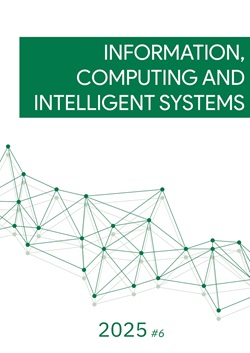Method for Detecting Anomalous Bearing Measurements Based on the Analysis of Distribution Density Histogram
DOI:
https://doi.org/10.20535/2786-8729.6.2025.326821Keywords:
radio direction finding, VHF range, statistical learning, anomalies, histogramAbstract
Subject of the research. Statistical models and algorithmic techniques for processing bearing-measurement datasets with the goal of detecting and filtering anomalous values. Object of the research. Methods for handling outliers in bearing-measurement datasets. Purpose of the work. To develop a method that improves the reliability of determining the direction to a radio-emission source in a single-station radio direction-finding system.
The article proposes a method for detecting anomalous measurements by analysing the histogram of their probability-density distribution. Propagation characteristics of very-high-frequency radio waves complicate radio direction finder operation, producing both random and systematic anomalies. The approach examines bearing-density histogram intervals rather than individual measurements, enabling an integrated assessment of sample structure and anomaly identification.
The method’s performance was assessed on bearing datasets of 100, 500 and 1000 measurements at confidence levels of 80–95 %. The evaluation of the method’s robustness was made for small and large arrays. The study analysed the influence of systematic and random anomalies on histogram construction and confidence-interval determination. Key metrics were bearing-estimation accuracy, root-mean-square error and method stability across varying confidence levels.
Results show the method minimises the impact of anomalous measurements at the tails and within the main cluster. Experiments demonstrate a reduced root-mean-square error and a consistent rise in direction-finding accuracy after anomaly removal. These findings confirm the technique’s potential for further development and integration into synthesised radio direction-finding systems, where bearing reliability and precision are critical.
References
W. W. Hsieh, Introduction to Environmental Data Science. Cambridge, U.K.: Cambridge Univ. Press, 2023, https://doi.org/10.1017/9781107588493.
D. Samariya and A. Thakkar, “A comprehensive survey of anomaly detection algorithms,” Annals of Data Science, vol. 10, no. 3, pp. 829–850, Jun. 2023, https://doi.org/10.1007/s40745-021-00362-9.
S. Baccari, M. Hadded, H. Ghazzai, H. Touati, and M. Elhadef, “Anomaly detection in connected and autonomous vehicles: A survey, analysis, and research challenges,” IEEE Access, vol. 12, pp. 19250–19276, 2024, https://doi.org/10.1109/ACCESS.2024.3361829.
C. S. K. Dash, A. K. Behera, S. Dehuri, and A. Ghosh, “An outliers detection and elimination framework in classification task of data mining,” Decision Analytics Journal, vol. 6, Art. no. 100164, Mar. 2023, https://doi.org/10.1016/j.dajour.2023.100164.
H. Xu, L. Zhang, P. Li, and F. Zhu, “Outlier detection algorithm based on k-nearest neighbors–local outlier factor,” Journal of Algorithms & Computational Technology, vol. 16, Art. no. 17483026221078111, Mar. 2022, https://doi.org/10.1177/17483026221078111
U. Binzat and E. Yıldıztepe, “The adjusted histogram-based outlier score – AHBOS,” Mugla Journal of Science and Technology, vol. 9, no. 1, pp. 92–100, Jun. 2023, https://doi.org/10.22531/muglajsci.1252876
N. Banić, N. Elezović, “TVOR: Finding discrete total variation outliers among histograms,” IEEE Access, vol. 9, pp. 1807–1832, 2021, https://doi.org/10.1109/ACCESS.2020.3047342
A. Wahid and A. C. S. Rao, “RKDOS: A relative kernel density-based outlier score,” IETE Technical Review, vol. 37, no. 5, pp. 441–452, Sep. 2020, https://doi.org/10.1080/02564602.2019.1647804
Downloads
Published
How to Cite
Issue
Section
License
Copyright (c) 2025 Information, Computing and Intelligent systems

This work is licensed under a Creative Commons Attribution 4.0 International License.




